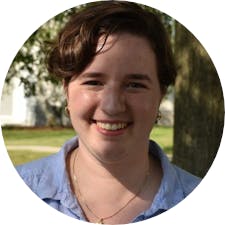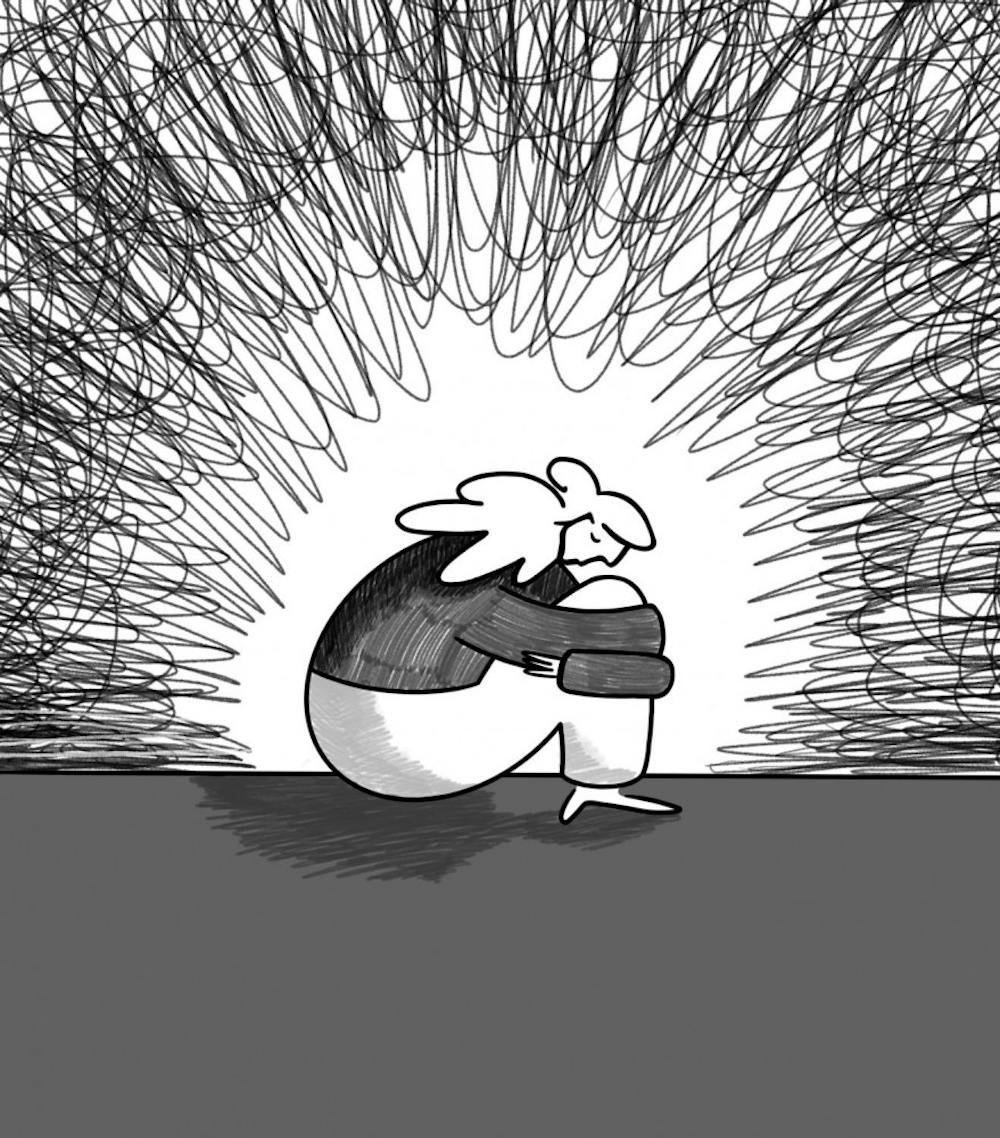Students have struggled to stay afloat during a year rife with uncertainty, grief and isolation. Counseling Services has seen a marked increase in students showing signs of anxiety, depression and suicidal thoughts on intake forms this year, according to Associate Director of Clinical Operations Ben Gooch. And for many students, the pandemic’s toll on mental health is only increasing, with stressors emerging from every corner of student life.
Living in a pandemic
Many students are grappling with existential questions about what it means to live through a global tragedy of this scale, according to Gooch.
Over the last year, students, along with the rest of the world, have watched Covid-19 deaths rise nationally and internationally and witnessed suffering on a massive scale. Many students come from cities and viral hotspots like Los Angeles and New York City, where they have witnessed the devastation of Covid-19 ripping through their communities.
Many students are also grappling with the personal grief of losing loved ones. Isaac Byrne ’21 lost both of his grandmothers just before the start of the spring semester. One of their funerals fell within the two-week pre-arrival quarantine window, and Byrne had to negotiate with the college for approval to attend.
Soon after Byrne arrived in Middlebury, his uncle also passed away. As classes ramped up and Byrne’s work as a club leader began in earnest, he had to attend the funeral over Zoom. He watched his family’s grief and his mother’s pain through a screen, unable to be with them as support, then immediately had to transition to doing his homework and running a club meeting.
While students deal with the profound personal and existential grief, they are struggling to keep up with the rigorous course load of a college semester.
“Students are coming back here and asked to be totally normal students who can perform 100% just like they would at any time with no recognition of the trauma and everything that's going on,” Ciara Carlson-Healy ’22 said.
No new normal
Rather than becoming accustomed to the “new normal,” many students are experiencing worsening stress and mental anguish as the pandemic stretches on.
“The one thing that we know about stress and the effects of stress is that it's additive,” Senior Student Life Dean Jennifer Sellers said. “Even if [the pandemic] doesn't directly influence someone, that still adds an element of stress. If you're compounding these things, either the direct effects or just the overarching, it just adds, and then you add on the real stressors of school and finals and things like that. It's just a lot on people's shoulders.”
For Carlson-Healy, the campus seemed to be in a perpetual “state of crisis” during the fall semester. With Covid-19 and its impact in the forefront of everyone’s mind, Carlson-Healy felt that a culture of empathy helped to alleviate some of the pandemic stress. She feels that has been lost this semester.
“You can't remain in crisis for that long because you're just exhausted,” she said. “We've tried to create this new normal, but in that, I think that we have lost our discussion of how incredibly hard it is to exist in this new normal. Because even though it's familiar now, social isolation is only building up and causing more and more problems over time.”
While students in a pre-pandemic semester could turn to social activities to replenish their mental energy and let loose, the social isolation only compounds the standard stressors of a semester with little relief, according to SGA Co-Director of Health and Wellness Eloise Berdahl-Baldwin ’21.5.
In years past, the number of students seeking counseling drops in the run-up to spring and Thanksgiving breaks as students anticipate the relief of time off at home with family. With an abbreviated break and no chance to leave campus, the number of students seeking counseling this spring has instead risen steadily throughout the semester, according to Gooch.
Along with heightened levels of isolation, students seeking counseling are reporting shortened attention spans and an inability to focus, as well as getting “stuck in their thoughts” and in spirals of negative self-talk, according to Gooch.
Academic stress
These issues are also impacting students’ abilities to perform academically. Carlson-Healy said she dropped one of her classes this semester because she was feeling overwhelmed. But, even with three classes, she still struggles to keep up with her ever-growing workload and the stress of this semester, an experience she feels is widespread among students.
Carlson-Healy also noticed that her professors were no longer checking in with her and her peers at the beginning of class, and both workload and course expectations seemed to return to pre-pandemic levels.
In light of students raising concerns, the Faculty Council and Educational Affairs Committee sent an email to all faculty members on April 7 urging them to adjust their teaching strategies to alleviate some of the pressure on students. The email encouraged professors to lighten reading loads, reduce the total number of assignments and exercise flexibility in their deadlines and grading, among other measures.
“We want to acknowledge that both students and faculty are also struggling,” the email said. “Some [students] feel overwhelmed because they believe that faculty have returned to a normal workload this semester despite the ongoing pandemic... While our teaching and learning might feel a bit more normal this semester, they still aren’t.”
Counseling services and MiddTelehealth
Counseling Services saw more than one in every six eligible students (17%) during the fall semester, according to Associate Director of Clinical Operations Ben Gooch. Based on data from Gooch, The Campus calculated that Counseling has already met with about 14% of students living on campus or in Vermont this semester, with an average of just under five sessions per student. Appointments conducted over MiddTelehealth were not included in these calculations.
Compared to last year, the data shows a dip in demand for counseling, which Gooch attributes to the difference in on-campus population. Many of the students who struggled the most with mental health before the pandemic and most frequently utilized the counseling services chose not to return to campus, taking semesters off or studying remotely instead.
Counseling Services are also only available to students in the state of Vermont. Remote students studying elsewhere in the United States have access to the online health platform MiddTelehealth for counseling, the statistics for which are not included in the above graphic.
Finding a lifeline
Gooch encouraged students struggling with mental health to seek counseling if it feels right for them. Students on campus or in Vermont can schedule a Zoom consultation with Counseling Services, with options for regularly scheduled visits or more immediate sessions. Students throughout the rest of the United States can schedule sessions through MiddTelehealth, which offers the same two options.
The Health and Wellness Education Center also offers programming for cultivating good mental health practices. The programs seek to develop students’ skills in coping, self-advocacy and help-seeking; foster a sense of belonging; reduce the stigma around mental illness; and increase awareness of available mental health resources, Assistant Director for Health and Wellness Education Maddie Hope said in an email to The Campus.

Sophia McDermott-Hughes ’23.5 (they/them) is an editor at large.
They previously served as a news editor and senior news writer.
McDermott-Hughes is a joint Arabic and anthropology and Arabic major.
Over the summer, they worked as a general assignment reporter at Morocco World News, the main English-language paper in Morocco.
In the summer of 2021 they reported for statewide digital newspaper VTDigger, focusing on issues relating to migrant workers and immigration.
In 2018 and 2019, McDermott-Hughes worked as a reporter on the Since Parkland Project, a partnership with the Trace and the Miami Herald, which chronicled the lives of the more than 1,200 children killed by gun violence in the United States in the year since the Marjory Stoneman Douglas High School shooting in Florida.




